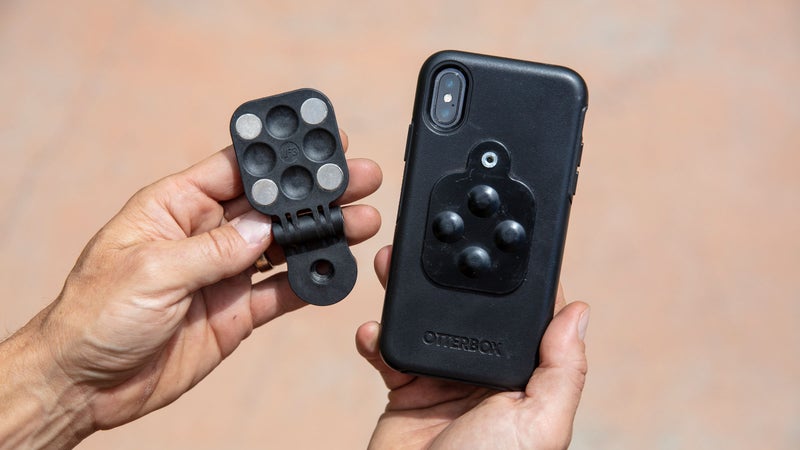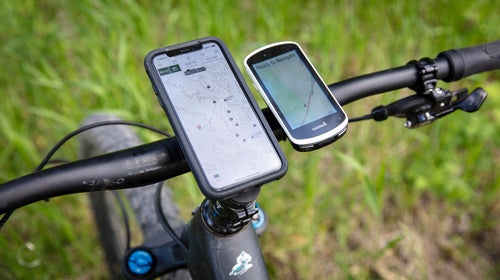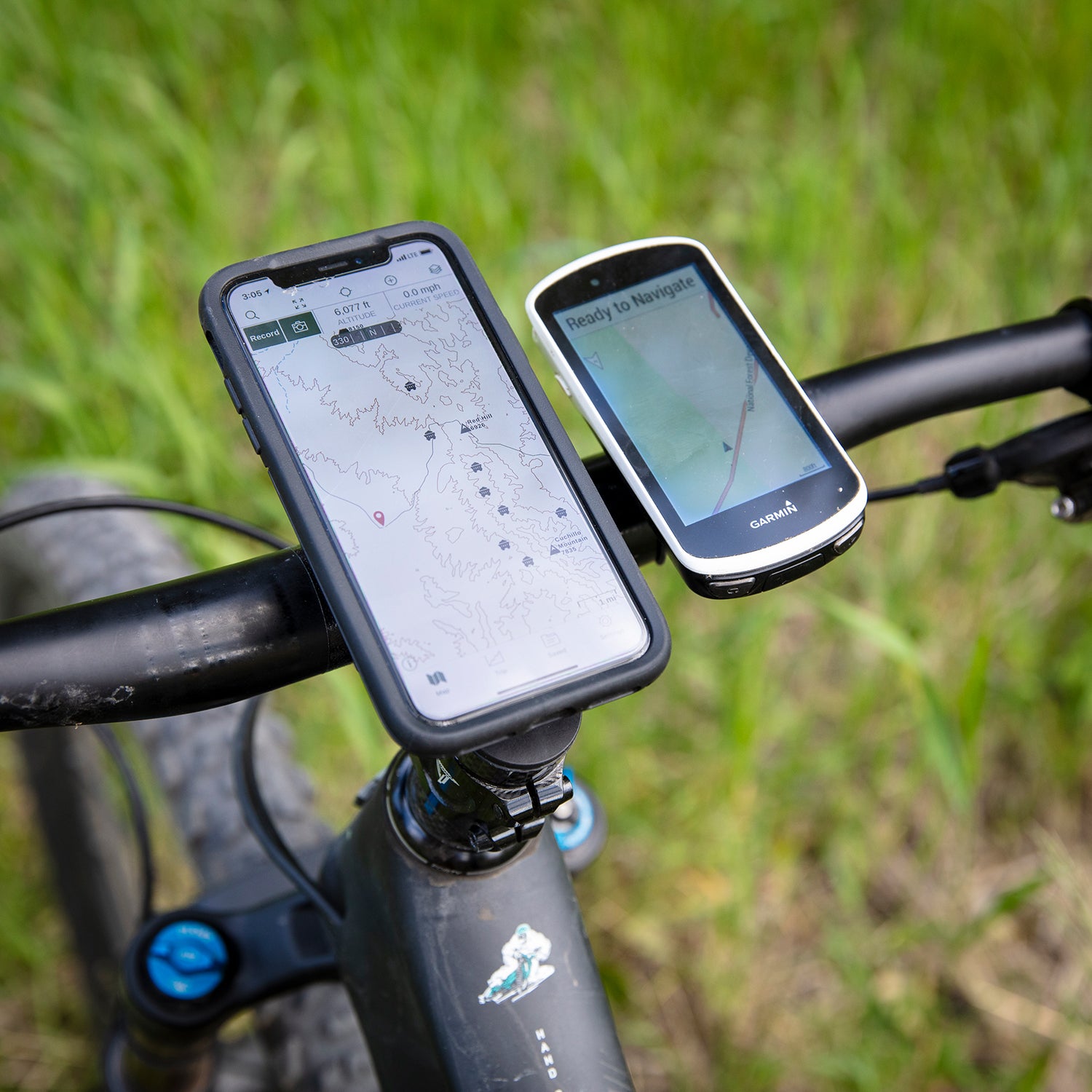A friend recently asked why I always use a cycling computer rather than just rely on my iPhone for navigation and route recording. “Today’s iPhones are better than desktop computers a few years ago,” he said. “Why spend the money on something else?”
I’ve always felt there are lots of good reasons to use a dedicated riding computer. Mapping capabilities, especially for uploading and following a course, were always better, and the measured data (heart rate, power, cadence) via ANT+ devices made them far more useful tools for athletes. Most important, I didn’t want to put an expensive smartphone at risk in the field. Sure, a high-end Garmin is costly, but if it bounced off the bike or got waterlogged in a storm (neither of which has ever happened to me, by the way), at least I wouldn’t be losing my daily access to work and communications.
But my friend’s question got me thinking about whether advances in phones and apps have perhaps made bike computers unnecessary. So, for the past few months, I’ve been running a state-of-the-art Garmin Edge 1030 side by side with my iPhone X on pretty much every ride, including a four-day bikepacking traverse of New Mexico. Though I expected to ride away from the experiment as dead set as ever on my Garmin, the verdict wasn’t that cut and dry.
iPhone X

The iPhone X is Apple’s top-end iPhone, with the largest screen, high-quality OLED resolution, a super-high-res camera, and advanced technology features including face recognition software and Apple Pay.
Durability
Ranking: 7/10
The new iPhone X is said to be dustproof and waterproof to three feet, and combined with an ($50) it’s relatively shockproof, too. But the only thing that made this experiment possible was the new ($60), which screws onto your bike via a hinged stem-cap mount and connects to your phone with four neodymium magnets. The F3 has weathered months in the field, and my phone doesn’t so much as stir, even on rocky, technical terrain.
Mapping
Ranking: 8/10
Apps like Gaia GPS, Trailforks, MTB Project, and OnX proved just as capable as the Garmin. The subscription-based ($20 per year) was my favorite, because it allowed me to create downloadable courses and navigate using hi-res maps—including downloadable USGS and National Geographic Trails Illustrated maps, even when offline (provided you preload the necessary areas).
Fitness Tracking
Ranking: 6/10
There’s no shortage of fitness tracking apps, but Strava seems to rule supreme, with basic ride mapping and speed, distance, and duration tracking. Just push start when you begin and stop when you end, and your phone uploads all your stats to the app when you’re done. You can even use the route function to follow a course in the field, though you’ll need service throughout to do so. What the iPhone (and other smartphones) can’t do is register more advanced data, like heart rate, power, and cadence, from other ANT+ devices.
User Interface
Ranking: 10/10
The iPhone X is massive on the front of the bike, but that big screen made it easy to navigate new areas while riding. The phone’s touchscreen interface is far superior to the Garmin, especially considering you also have Google Maps, which is convenient when touring new places or just commuting home.
Battery Life
Ranking: 5/10
While the new iPhone’s battery life is impressive (Apple claims up to 12 hours with heavy internet use, and I’ve routinely gotten 18 and more), apps like Gaia and OnX chew through the power. On the bikepacking tour, I routinely emptied the iPhone battery in four to five hours.
Cost
Ranking: 4/10
A fully loaded X like mine goes for $1,150, and if you factor Apple Care, an OtterBox case, and the F3 mount, you’re pushing $1,500. That’s more than double the Garmin, though if you plan to have a phone anyway, then the cost may be a nonissue.
Garmin Edge 1030
This top-end model is Garmin’s finest and largest cyclist-specific computer. It is more than twice as thick as the iPhone X, but it weighs 30 percent less (123 grams) and its screen is roughly half the size. There are smaller, less expensive full-featured Garmin devices (like the new ), but I prefer the 1030’s bigger screen for mapping, and it seemed the most apt comparison to the X.
Durability
Ranking: 9/10
The 1030 is so well weather-sealed, including a plug for all ports, that I’ve ridden with it in all-day rain with zero issues. The screen is also tougher: I put a plastic screen cover on past Edge models and still ended up with scratches from swiping with gritty gloves, but I used no such protector on the 1030 and my screen remained pristine.
Mapping
Ranking: 8/10
Garmin pretty much has GPS mapping down pat. The 1030 comes with a strong set of base maps, and it’s easy to upload tracks and courses via the Garmin Connect app, which tracks your ride stats over time. You can also sync the device to third-party apps like Strava and Training Peaks for seamless uploads and downloads, including a new functionality (IQ Connect) that allows you to download routes without plugging the device into your computer. The maps even let you search for amenities (restaurants, lodging, etc.) and create routes to get there. I do wish that we could upload other maps, like USGS, as with Gaia.
Fitness Tracking
Ranking: 10/10
What sets the 1030 (and many cycling computers) apart from the iPhone are the fitness-specific functions. You can upload and create workouts to follow, but the 1030 is also compatible with countless external devices via both ANT+ and Bluetooth Smart, including power, cadence, speed, and heart rate monitors; Shimano Di2 components; lights; and cameras. Garmin also introduced a Training Status feature, which uses heart rate analytics from a company called to monitor your efforts over time and ultimately offer detailed statistics on fitness load, stress, and rest to help with planning your workout regimen.
User Interface
Ranking: 5/10
Garmin’s interface works pretty well but still feels rudimentary compared to the iPhone. The new touchscreen is an improvement over past iterations, though it’s variable with gloves. The screen resolution and backlight, though solid, still doesn’t compete with Apple. And despite the new homepage layout and the ability to create separate accounts for different bikes, I still occasionally spend too much time trying to find functions (such as turning Auto Stop on and off) because they are buried under stacks of menus.
Battery Life
Ranking: 9/10
I’ve run my 1030 for up to 19 hours on a charge. With this model, Garmin has introduced a new supplemental battery pack, the ($130), which clips to the bottom of the unit using a two-sided, out-front mount and provides 24 additional hours of run time. That puts you into two full days of run time, which was enough to get me through four days of touring without a recharge. That’s outstanding.
Cost
Ranking: 7/10
Starting at $600, the Garmin Edge 1030 isn’t cheap, and that doesn’t count all the extra costs of peripherals.
Verdict
For avid cyclists who value training and metrics, a dedicated cycling computer such as the Garmin Edge 1030 is a no-brainer. It’s not cheap, but this device can capture and track everything, and the mapping capabilities are top-notch. Garmin has even made its computers useful for bikepacking with the addition of the supplemental battery pack. Of all the dedicated cycling computers I’ve used, the 1030 is the most advanced, despite the slightly clunky interface.
For riders who don’t need all that data and don’t plan to regularly ride more than three or four hours at a time, a smartphone has become a very good choice. The constantly improving apps make it possible to easily track the basics and navigate in the backcountry, even if you don’t have a signal. The F3 mount means you can do it without putting your investment in serious peril. The mount will even change the way I ride: I liked having fingertip access to music, audiobooks, podcasts, my camera, and a backup mapping system so much that I will ride with my phone on my bars on all future bikepacking trips. Since most people these days carry a smartphone, this is a great option for those who don’t want to spend more—like my friend who questioned the need for a Garmin.


